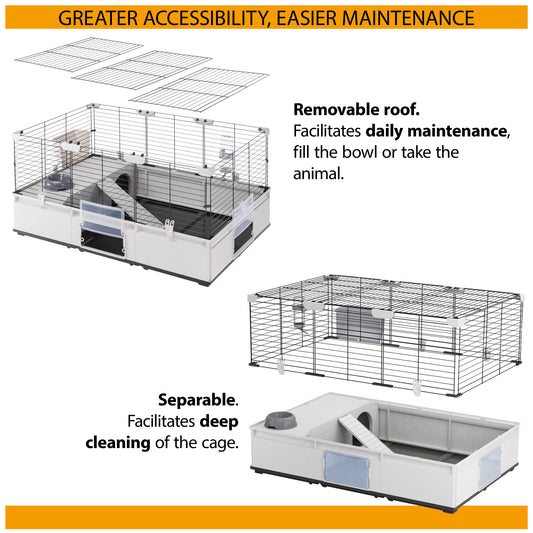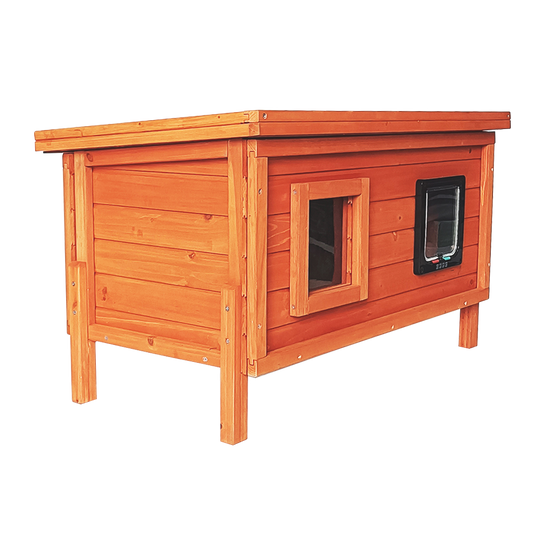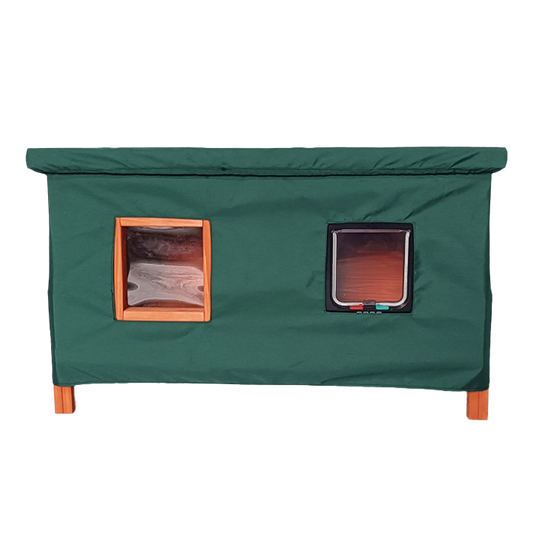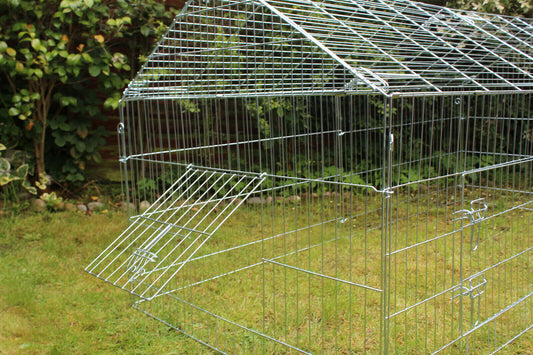By Karen Cornish
July has been designated as National Pet Hydration Month to highlight the importance of keeping cats cool and hydrated during the summer months. Persuading cats to increase their water intake in the hottest months can sometimes be tricky so make sure you follow our top tips for cool cats.
Why is hydration so important?
Water intake is essential to a cat’s overall health as it replaces the fluids an animal loses through urinating and defecating. It is also necessary for maintaining healthy circulation and digestion.
A cat that becomes dehydrated loses more than just water as when fluids are lost, so too are essential minerals such as chloride, sodium, and potassium.
How much water do cats need to drink?
As a rule of thumb, adult cats need around an ounce of water per pound of body weight to maintain a good level of health.
When things heat up, the amount of water a cat’s body requires will increase. In extreme temperatures it is vital that you know how to give your pet the hydration they need.
Signs of dehydration
Keep an eye on your cat during hot weather for any signs that they could be dehydrated. If ignored, symptoms could worsen leading to ill health, so the earlier you can spot the signs in your cat, the better.
Dry skin, sunken eyes, dry gums, loss of appetite, drooling, panting, weakness, lack of energy, trembling and an increased heart rate are all signs that a cat could be experiencing dehydration. A simple test you can try on your cat if you suspect dehydration is known as ‘skin tenting’.
Gently pull up a small portion of your cat’s skin around their shoulders and then let it go. The skin of a sufficiently hydrated cat will snap back into place quickly, while the skin of a dehydrated cat will remain in a ‘tent’ position or will fall back slowly.
If you suspect that your cat is dehydrated, you should seek veterinary attention as soon as possible so your pet can get the treatment they need.
Taking in water
Cats on a wet food diet will consume a certain amount of water every time they eat, so will not need to drink as much as cats on a dried food diet. In fact, wet cat food is often made up of 75-80% water while dried food is only 6-10% water. If you suspect your cat is not drinking enough - and they are fed with dry food - it might be worth considering a switch to a wet food variety.
Cats should always have access to water bowls so that they can drink at any time, and these bowls should be regularly refreshed, and kept cool and clean. Some cats enjoy having ice cubes added to their drinking water on hot days to help it stay colder for longer.
For a cool refreshing treat on a hot day, you could make your own icy treats by freezing some low-salt chicken stock or spring water from a can of tuna into ice lolly moulds. As well as cooling your cat down they can help to keep your pet entertained.
Fussy drinkers
Most cats can be a bit picky when it comes to drinking and have their own preferences. Generally, the fresher and colder the water source, the more appealing it is to a cat. This fussiness stems from the domestic cat’s wild ancestors who knew instinctively not to drink from standing water which could be stagnant and make them ill.
This is why many pet cats prefer to drink out of a running tap than from their water bowl, and why in recent years, pet drinking fountains have become popular amongst cat owners.
Top tips for getting your cat to drink
· If your cat is choosing not to drink from their water bowl, it could be the location that is causing an issue. Offer a choice of different water bowls in various quiet locations in the house and at different heights to see what your cat prefers.
· Keep your cat’s water bowls clean and hygienic by washing them frequently and replacing the water regularly throughout the day so it stays fresh.
· Cats generally don’t like their water to be too close to their food so if you have joined food and water bowls try using separates and placing them at either ends of a room. This is because cats don’t tend to like drinking if they can smell food and in the wild cats would keep their meat away from water sources to avoid contamination.
· The material that your cat’s water bowl is made from could be affecting their drinking experience. For example, some cats do not like the reflections created by shiny stainless steel bowls. Also, a cat’s whiskers are very sensitive and if a bowl is too narrow, they might touch the sides, making it disconcerting for a cat. It helps to fill a water bowl as much as possible to avoid your cat having to put their face right into it.
· Running water tends to feel cooler to drink, which is why cats seem to enjoy drinking straight from a tap. Pet water fountains are a safe way to provide a cat with a constant supply of fresh running water without having to worry about potentially flooding a bathroom or kitchen!
· If your cat is reluctant to drink more in hot weather, you could add some fresh water to their food or put a little chicken broth or tuna water into their water bowls to make them more appealing.
· Older cats or those with health concerns such as diabetes, kidney problems or thyroid issues, may struggle more than most to keep hydrated on hot days. Speak to your vet about your individual cat’s needs and they will be able to help you to maintain healthy hydration levels in your pet.
Heatstroke
Sun-worshipping cats are generally good at seeking out shade when it gets too hot but they can suffer from heatstroke if they become dangerously overheated. The most common cause of heatstroke in cats is due to being trapped in hot, poorly ventilated spaces such as greenhouses or conservatories. Make sure you know where your cat is seeking shelter on a hot day and ensure they can’t become stuck somewhere where they are likely to overheat.
Some cats are more prone to suffering from heatstroke than others and these tend to be ones that find it harder to cool down. Elderly, very young, long-haired, flat-faced and obese cats will find it more difficult to keep cool so they are likely to need some help from their owners.
Ensuring your cat remains hydrated during the summer months will help to prevent heatstroke but owners should make themselves familiar with the signs so they can act quickly if they suspect heatstroke.
Signs of heatstroke
Heatstroke can prove fatal to cats if left untreated, so on hot sunny days it’s vital that you look out for the following symptoms:
· Excessive panting
· Dribbling
· Vomiting
· Diarrhoea
· Collapse
If you suspect that your cat is suffering from heatstroke you should move it to a cool well-ventilated area and use a fan if you have one. Offer your cat sips of water and drape towels soaked in cold water over their body. Contact your vet as soon as possible so they can advise you on what to do next.
Sunburn
Sunburn can be very uncomfortable and painful for affected cats, and just like humans, cats can develop skin cancer through exposure to the sun’s harmful UV rays.
Despite being mostly covered in fur, cats can become sunburnt on sunny days so may need to wear sunscreen to protect them during the summer months. This is particularly important for cats that have white hair and light skin, and on vulnerable areas of the body such as the tips of the ears, nose, and stomach.
Choose a sunscreen product that has been specially designed for use on pets and make sure it offers at least factor 30 protection. Many of the ingredients in human sunscreen are toxic to cats if ingested through self-grooming so only use a cat-safe formulation.
When applying sunscreen to your cat, do so gently and be careful not to get any of it in your pet’s eyes. Once the sunscreen has been applied it is a good idea to give your cat something to do or play with them as a distraction so they don’t immediately start trying to lick it off.
If you have an indoors-only cat, while they are at a much lower risk of sunburn, they can still be affected from the sun’s rays coming in through windows. Cats tend to love sunning themselves on windowsills so consider fitting some UV-blocking film to your pet’s favourite windows. This way the harmful UV rays are blocked out but your pet can still enjoy the light and warmth of the sun.
Keeping your cat cool
Aside from keeping your cat hydrated there are some other things you can do on hot days to make them more comfortable in the heat.
· Playing with ice cubes – cats love batting lumps of ice around and watching them skid across hard floors. In addition to cooling their paws this activity will provide a valuable enrichment opportunity if it is too hot to let your cat play outside.
· Create some shade – ensure that you provide lots of shady areas for your cat outdoors by hanging sheets or putting up parasols.
· Chilling in bed – place a cooling mat in your cat’s bed to help it chill out. Specific pet cooling mats are available to buy or you could make your own by wrapping freezer blocks in an old towel.
· Damping down – it’s very unlikely that your cat would choose to cool off in water but it is a very effective way of lowering the temperature. Instead, damping a small towel or flannel and dabbing your hot cat with it can make them more comfortable on a very hot day.
· Daily grooming – Excess dead hair caught in your cat’s coat will trap heat, making them hotter so it is important to keep on top of grooming. A daily groom will help to make a hot cat more comfortable.
· Keep your cat indoors – On days when the heat is excessive it could be safer to keep your cat indoors, especially when the sun is at its strongest, between 10am and 4pm. Keeping the curtains closed and using a fan can help to make a more comfortable environment for your cat. To stop an outdoors cat from becoming bored when confined to the house it is a good idea to provide some enrichment activities like puzzle toys and interactive feeders to keep them entertained.
If you enjoyed this article, why not read:









